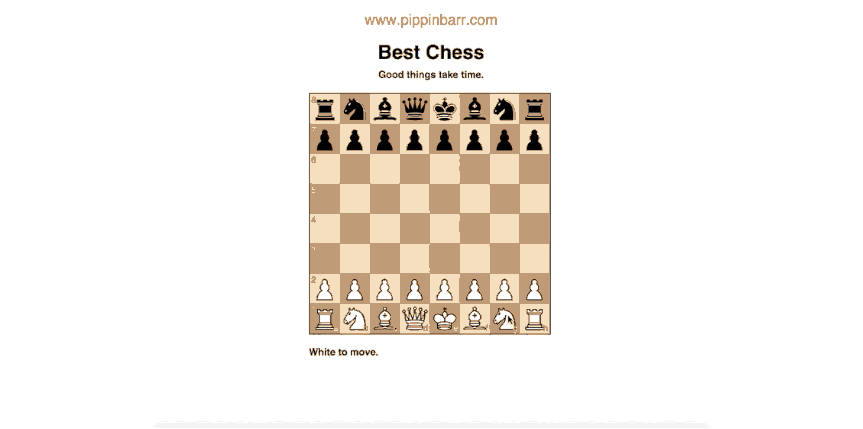I could not possibly tell you what it’s like to play a full game of Pippin Barr’s Best Chess. Two hours after my opening salvo, the game’s computerized opponent had yet to make its first move. That, in turn, means I can very much tell you what it’s like to play Best Chess.
Unlike a high school dance, you always make the first move in Best Chess. In theory, that choice is consequential. So think about it, make your move, and wait. Then wait some more. Wait a little bit more. Go make yourself a snack or maybe a 24-course tasting menu. Come back to your computer and wait some more. Be patient, the computer is working. You can see it calculating options at the bottom of your screen: 1, 2, … 12 … 2,300. Look, there are a lot of options in chess. In his 1950 paper, “Programming a Computer for Playing Chess,” the mathematician Claude Shannon estimated that there are roughly 10120 possible options for the computer to run through. Sit back, this is going to take a very long while. Or just cut to the chase and give up already.

For a game in which nothing ever happens, one can experience quite a lot while playing Best Chess. (Playing, admittedly, is a generous term for what one is doing, but let’s go with it.) Just look at all the numbers scrolling along the bottom of your screen and marvel at how profoundly out of your league you are. You could not possibly compete with such computational power. If you and your internet browser could keep going for decades, you know you would lose. But how could you lose a game in which the opposing player will never make a move? Through its unrelenting slowness, Best Chess bludgeons you into submission.
This raises an interesting possibility: What if it’s all a bluff? Best Chess isn’t actually bluffing, but what if it were? What if a chess game was just printing out numbers at the bottom of your screen until you relented? Would that be any different? Chess is a largely mathematical exercise, as Best Chess’ many numbers demonstrate. As such, the optimal strategy for a player is to stick to purely rational calculations. But humans have a tendency to overestimate their rationality and a propensity for being led down irrational routes. While this psychological dimension is more commonly associated with poker than chess, winning always requires you to overcome your nerves and lesser instincts. It therefore makes very little difference that all of Best Chess’ numbers are correct. Their overwhelming presence is what does you in. The game’s great irony is that it uses cold, rational math to achieve a purely psychological victory.
Best Chess is therefore largely about the performance of thinking as opposed to the underlying act of thinking. As Pippin Barr puts it, one of the big challenges in developing the game was “[conveying] that the game is “really solving chess”?” A chessboard on which nothing ever happened would not have convinced the player that the computer was thinking. This, again, is the game’s psychological dimension. The solution to this problem—a running list of possible moves—is entirely superfluous to the action on the board and yet the crux of the game itself. For a game about the way a computer approaches chess, Best Chess really is all about pandering to and toying with the irrational needs of humans.
